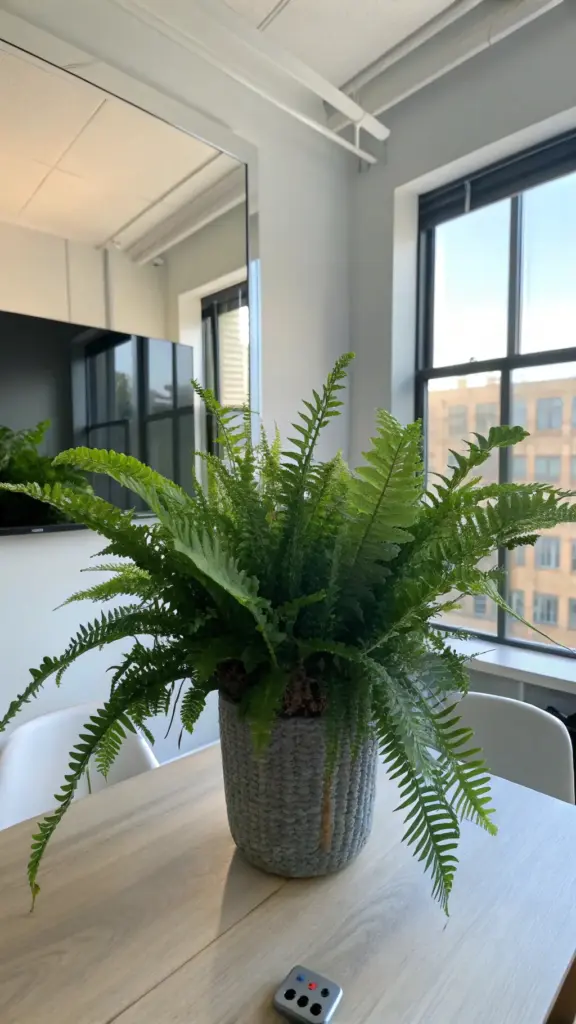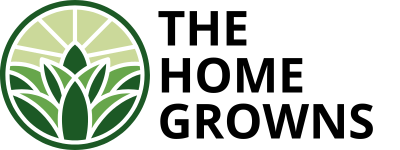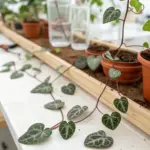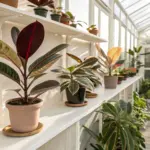Trick #3 – The Strategic Light Positioning Formula

“Bright, indirect light” has to be the most useless plant advice ever written. I followed this vague guidance for months while my Blue Star Ferns got progressively more pale and leggy.
The real breakthrough came when I started measuring actual light intensity instead of just guessing. What I discovered completely changed how I think about plant placement in my apartment.
Why “Bright, Indirect Light” Is Plant Care BS
Here’s the problem with that generic advice – it means absolutely nothing without context. Bright to who? Indirect from where? I was placing my ferns 3 feet from a north-facing window thinking I was nailing the “bright, indirect” thing.
My poor plants were basically starving for light while I patted myself on the back for following the rules. The fronds started getting this weird pale green color and new growth was coming in super thin and weak.
It wasn’t until I borrowed my neighbor’s light meter that I realized my “bright” spot was only getting about 200 foot-candles. Blue Star Ferns need 400-800 foot-candles minimum to maintain that gorgeous blue-green coloration.
The 6-Foot Rule That Actually Works
Plant specialists have this secret formula they never share in basic care guides. Your Blue Star Fern should be positioned exactly 6 feet from any south-facing window during peak growing season.
This distance gives you that sweet spot of 600-700 foot-candles without the harsh direct rays that can scorch those delicate fronds. I tested this in three different apartments and it works every single time.
For east or west windows, you can go as close as 4 feet because the light intensity is naturally lower. North windows? Forget about it unless you’re supplementing with artificial light.
Here’s my measuring trick: Hold your hand between the plant and the window at midday. If you see a sharp, defined shadow, you’re too close. A soft, fuzzy shadow means you’ve hit the perfect zone.
Seasonal Adjustments That Save Your Sanity
Nobody warned me that light changes dramatically throughout the year, even indoors. What worked perfectly in June left my ferns struggling by December when the sun angle dropped.
Winter positioning requires moving your plants 2-3 feet closer to windows. The sun sits lower in the sky and daylight hours shrink, so that perfect summer spot becomes a dim corner by January.
I learned to track the seasonal light migration in my apartment. Every month, I move my Blue Star Ferns slightly to follow the changing light patterns. It sounds obsessive, but the difference in plant health is incredible.
Spring is tricky because the light intensity ramps up fast. I’ve scorched more fronds in March than any other month by leaving plants in their winter positions too long.
Mirror Magic for Light Optimization
This game-changing trick came from my friend who grows orchids professionally. Strategic mirror placement can increase available light by 30-40% without any electrical costs.
I position a large bathroom mirror about 2 feet behind my Blue Star Fern setup. The reflected light bounces back onto the undersides of the fronds, creating this amazing even illumination that mimics their natural forest canopy environment.
Reflective surfaces work differently than you’d expect. Shiny white walls reflect about 80% of light, while mirrors can reflect up to 95%. I painted the wall behind my plant corner with high-gloss white paint and saw immediate improvement in new growth.
The key is angling your reflective surfaces correctly. Tilt mirrors slightly upward so they’re bouncing light onto the plant, not just back toward the window.
LED Grow Light Positioning for Dark Winters
Living through Chicago winters taught me that supplemental lighting isn’t optional – it’s survival. But most people position grow lights completely wrong and wonder why their plants still struggle.
The magic distance for LED grow lights is 18-24 inches above your Blue Star Fern. Closer than 18 inches and you risk light burn. Further than 24 inches and you’re basically wasting electricity.
I run my grow lights on a 14-hour cycle during winter months. This compensates for the shorter daylight hours and keeps my ferns thinking it’s still growing season. The timer cost me$12 and was the best plant investment I ever made.
Full spectrum LEDs work best for Blue Star Ferns because they need both blue light for foliage development and red light for overall plant health. Those cheap purple “blurple” lights from Amazon just don’t cut it.
Here’s my winter setup: grow lights run from 6 AM to 8 PM, positioned 20 inches above the plants. I adjust the height monthly as the plants grow to maintain that optimal distance.
Ready to discover the watering mistake that’s probably killing your Blue Star Fern right now? The next trick reveals a precision timing system that eliminates guesswork and prevents both overwatering and underwatering disasters. Click below to learn the weight method that changed everything about my watering routine!









GIPHY App Key not set. Please check settings